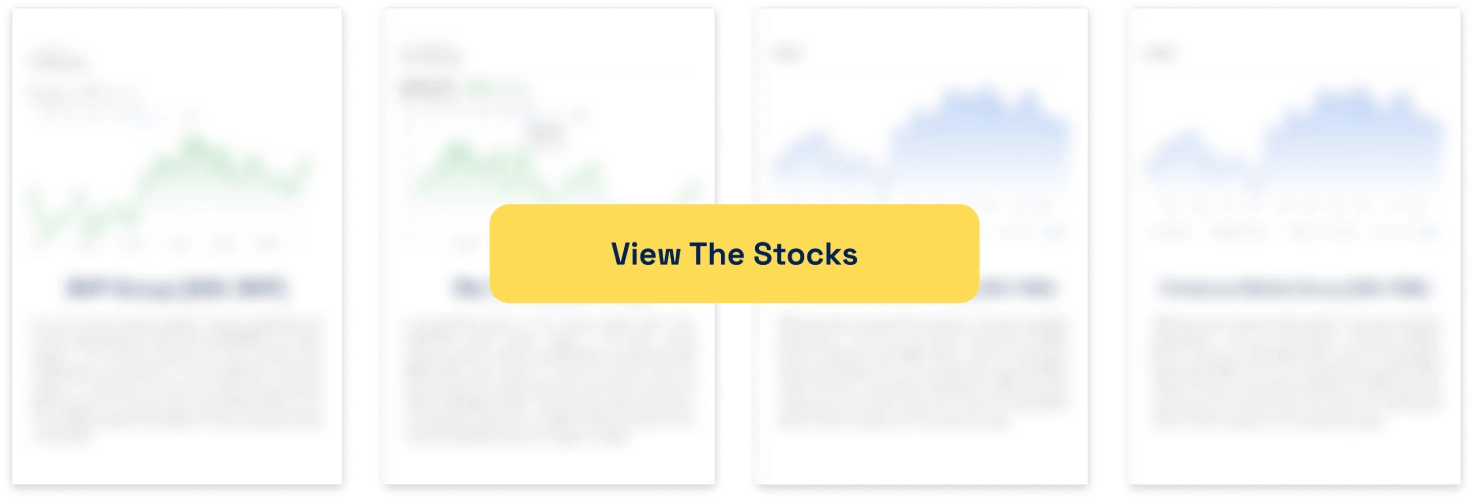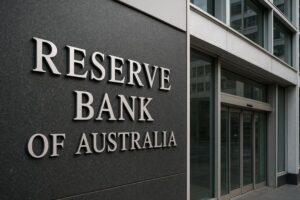RBA Expected to Hold at 3.6%—Here’s What It Means for ASX Dividend Stocks & the Banking Sector
![]() Ujjwal Maheshwari, November 1, 2025
Ujjwal Maheshwari, November 1, 2025
The Reserve Bank of Australia (RBA) meets on Tuesday, November 4, at 2:30 PM AEDT, and anyone expecting rate relief will be disappointed. With the cash rate staying at 3.6% and term deposits still paying 4.5-5%, dividend investors face a tough choice: are ASX bank stocks worth the risk when risk-free alternatives offer comparable returns?
All 34 economists surveyed expect interest rates to hold, a sharp reversal from just weeks ago when a November cut seemed likely. For investors in bank shares and dividend stocks, this creates a complex picture: margin stability for banks, yes, but also fierce competition from guaranteed term deposit yields.
What are the Best Bank stocks to invest in right now?
Check our buy/sell tips
Why the RBA Won’t Cut This Week
September’s inflation numbers killed hopes for a rate cut. Inflation jumped to 3.2%, pushing above the RBA’s comfort zone. More worrying, the underlying inflation figure came in well above what the central bank was expecting. Governor Michele Bullock made it clear that even a small inflation surprise would matter when deciding on rates.
The housing market is bouncing back, and consumer spending is picking up faster than forecast. Major banks now expect the next rate cut won’t happen until mid-2026 at the earliest. That’s a long wait for borrowers, and it changes the math for income investors trying to decide where to park their money.
What a Rate Hold Means for ASX Bank Stocks
The big four banks have delivered extraordinary returns in 2024 and into 2025, but much of that gain came from valuation expansion rather than earnings growth. Tuesday’s expected rate hold should provide breathing room for net interest margins, which face ongoing pressure from deposit competition and mortgage pricing wars.
Commonwealth Bank (ASX: CBA)
Australia’s largest bank continues to generate massive profits exceeding $10 billion annually, underpinned by its market-leading digital platform and dominant retail franchise.
● Currently trading at a premium valuation of around 30x earnings, leaving little room for disappointment
● Generates fewer loans through brokers compared to peers, keeping more commission revenue in-house
● Rate stability prevents margin compression, but the dividend yield of around 2.7% struggles to compete with term deposits
National Australia Bank (ASX: NAB)
NAB’s strength lies in business banking, where it commands a 21% market share, representing roughly $230 billion in loans.
● Well-positioned for when rate cuts eventually arrive and businesses resume borrowing activity
● Has faced competitive headwinds, losing $5 billion in business loans over the past year to rivals
● Offers better dividend value than CBA at around 4% yield, though growth remains modest
ANZ Group (ASX: ANZ) & Westpac (ASX: WBC)
Both have participated in the banking sector rally, with strong year-to-date performance driven primarily by multiple expansion rather than operational improvements.
● Rate stability removes near-term margin pressure that threatened profitability outlooks
● Trade at more reasonable valuations than CBA, in the 16-17x forward earnings range
● Dividend yields of 4-5% fully franked, but with rates on hold, face stiff competition from risk-free alternatives
The Dividend Stock Dilemma
Here’s the challenge for income investors: while banks benefit from rate stability, higher-for-longer rates keep term deposit returns attractive at 4.5-5%, creating stiff competition for dividend stocks. Investors seeking income need to carefully weigh yield against capital preservation.
With the rate hold extending the timeline for cuts, dividend stocks need to offer compelling yields to compete with risk-free alternatives. This creates opportunity in defensive dividend plays outside the banking sector:
Coles Group (ASX: COL)
The supermarket giant recently increased its interim dividend by 2.8% to 37 cents per share, resulting in a trailing yield of approximately 3.3%.
● Defensive revenue stream from grocery essentials provides stability during rate uncertainty
● High payout ratio of roughly 83% means limited room for dividend growth
● Appeals to investors prioritising stability over aggressive capital gains
Utility and Infrastructure Stocks:
Companies like APA Group (ASX: APA) and Transurban (ASX: TCL) offer defensive characteristics with regulated returns and steady cash flows that support reliable dividends of around 4-5%.
The key advantage: pricing power to offset higher debt refinancing costs.
The Bottom Line
Tuesday’s rate hold is good news for bank margins but creates a tough choice for dividend investors. Bank stocks have run hard and look expensive now, especially CBA. With dividend yields of 2.7-5% competing against term deposits at 4.5%, you’re not getting paid much extra for taking on share price risk.
If you’re hunting for income, focus on quality names with sustainable dividends rather than chasing the highest yields. The big banks offer reliable, fully franked dividends backed by strong balance sheets. Defensive plays like Coles give you stability from essential spending.
With rates likely staying high well into 2026, be selective. Look for companies that can maintain their dividends even if the economy slows, reasonable valuations that leave room for upside, and businesses with pricing power to handle cost pressures. The rate hold removes some uncertainty but doesn’t make dividend stocks a slam dunk against guaranteed term deposit returns.
Blog Categories
Get Our Top 5 ASX Stocks for FY26
Recent Posts
RBA Rate Hold: 3 ASX Property Stocks Set to Benefit (October 2025)
The Reserve Bank of Australia meets this Tuesday, and anyone hoping for mortgage relief will likely be disappointed. With inflation…
Elevra Lithium (ASX:ELV) Jumps 9%: Macquarie Backs 22% Upside on North American Play
Elevra Lithium (ASX: ELV) surged 9% today after Macquarie upgraded the stock with a $5.20 price target, representing 22% upside…



